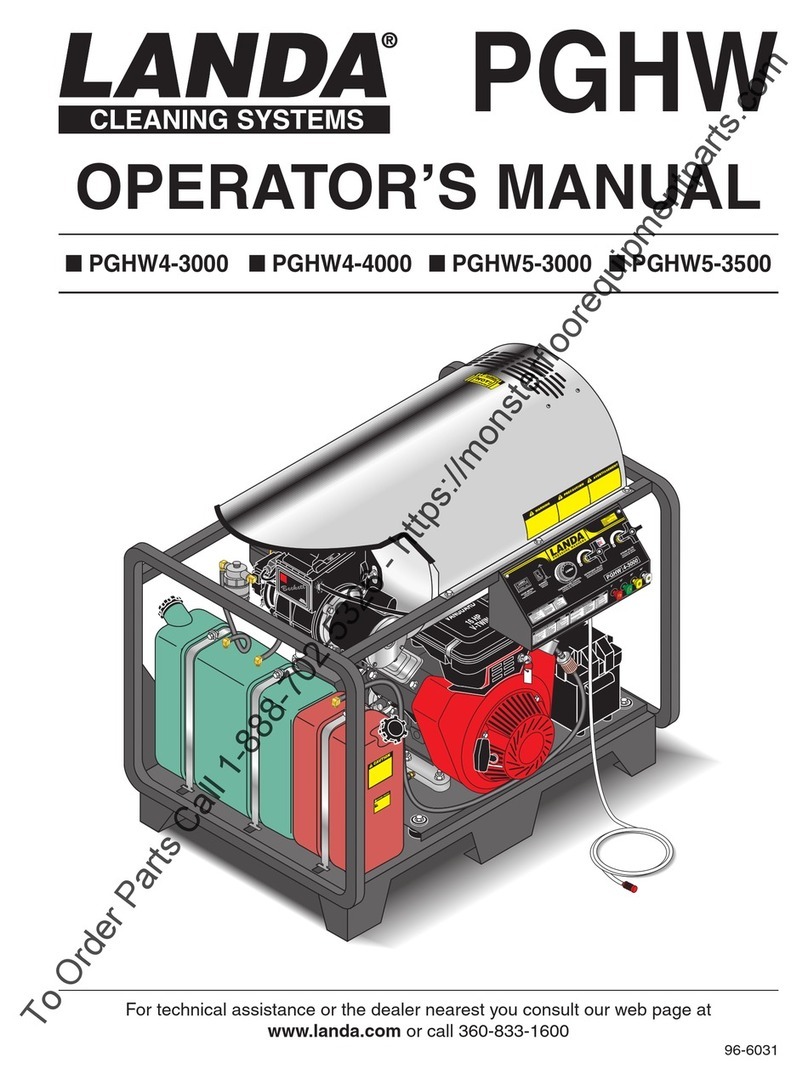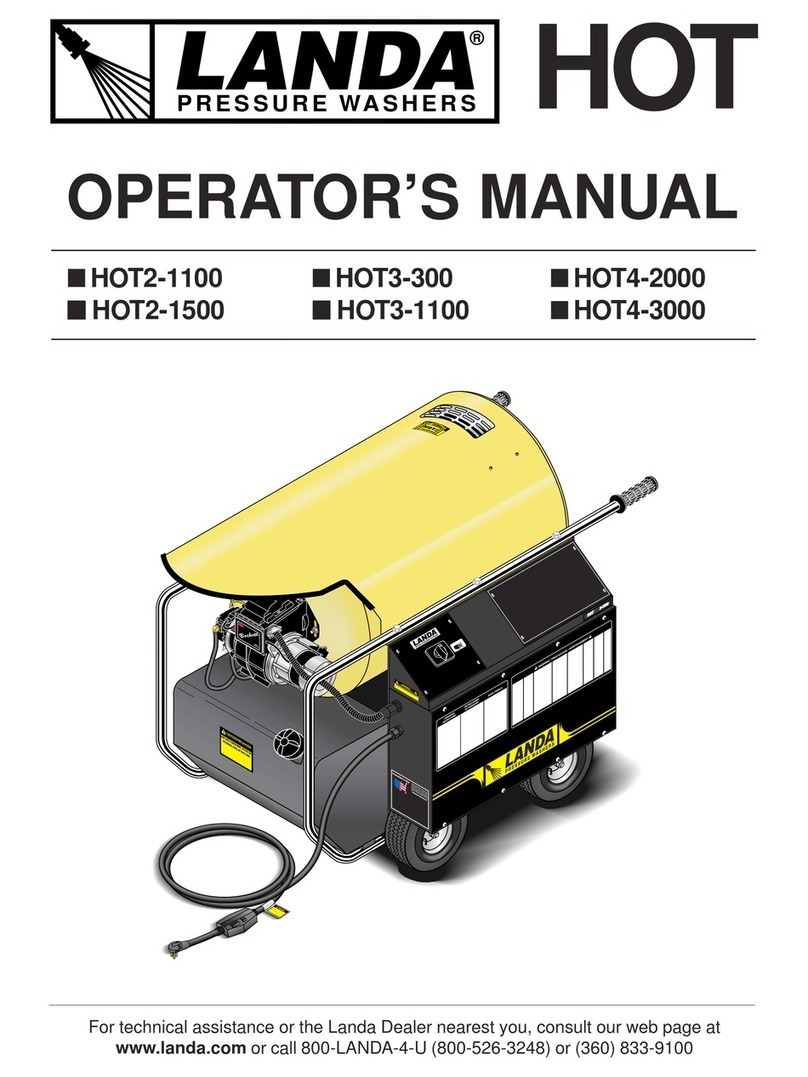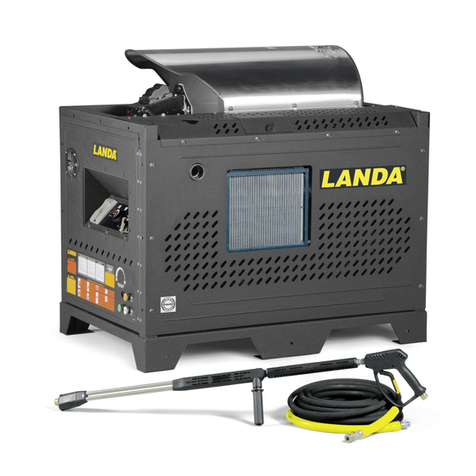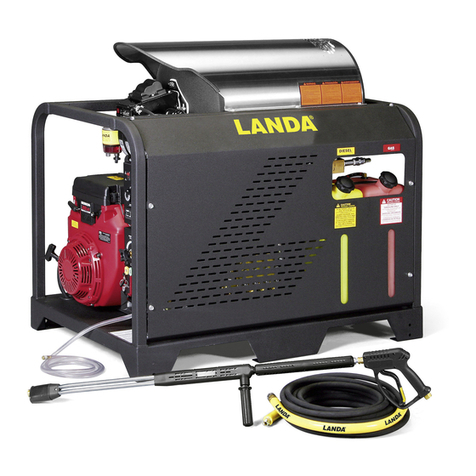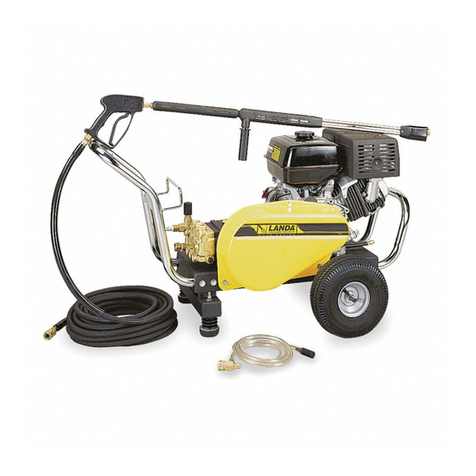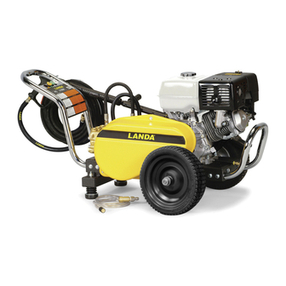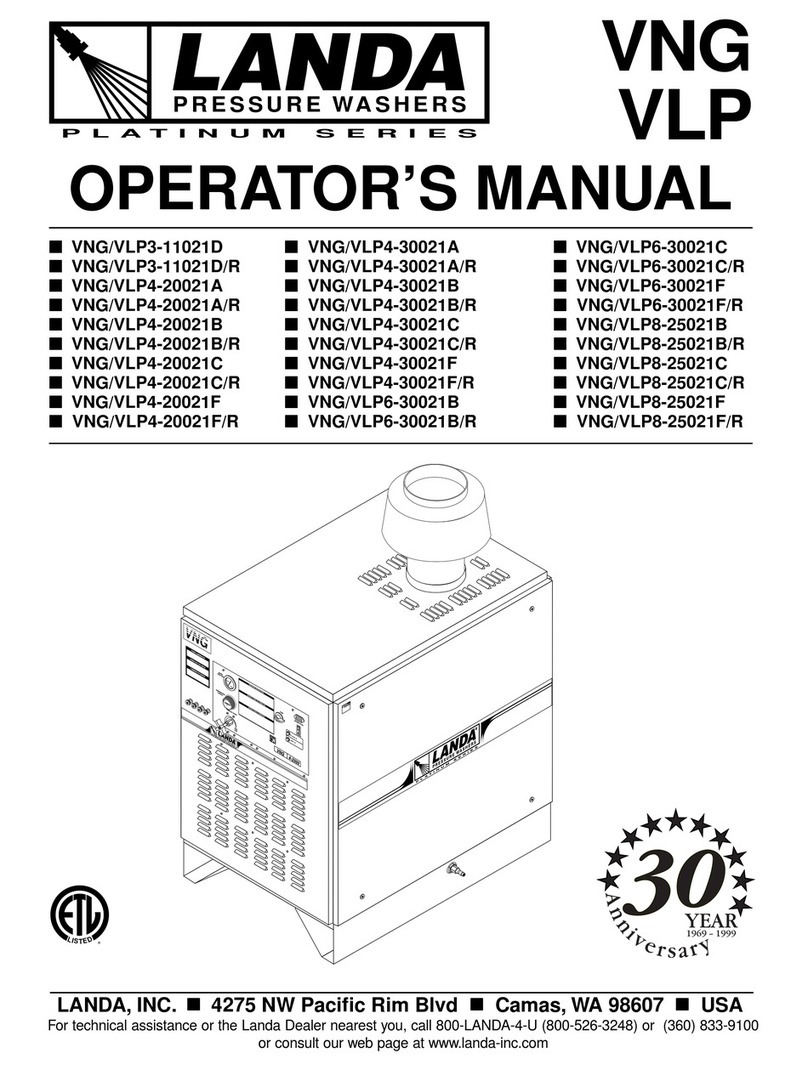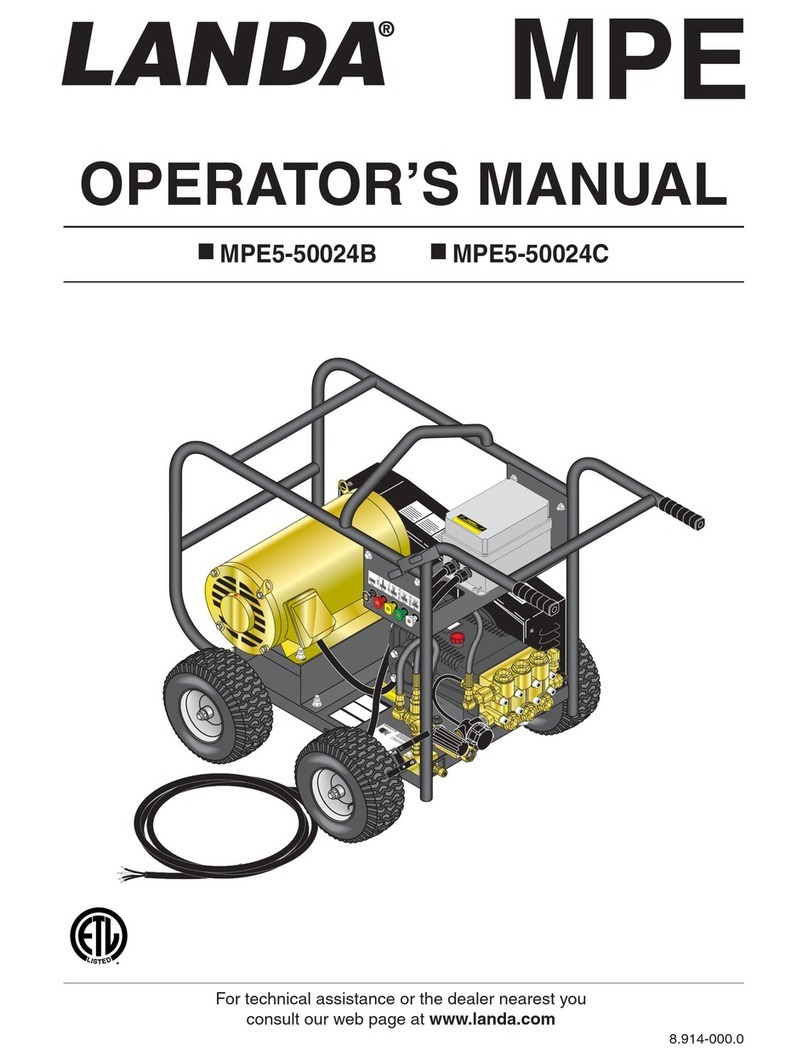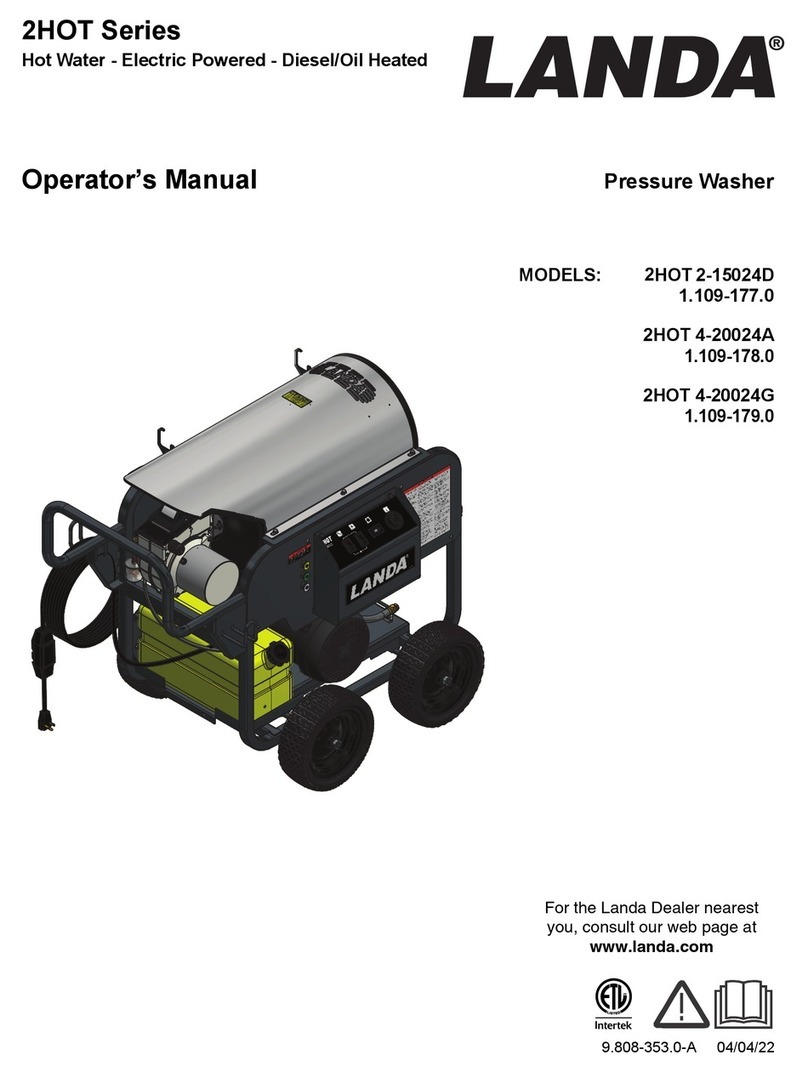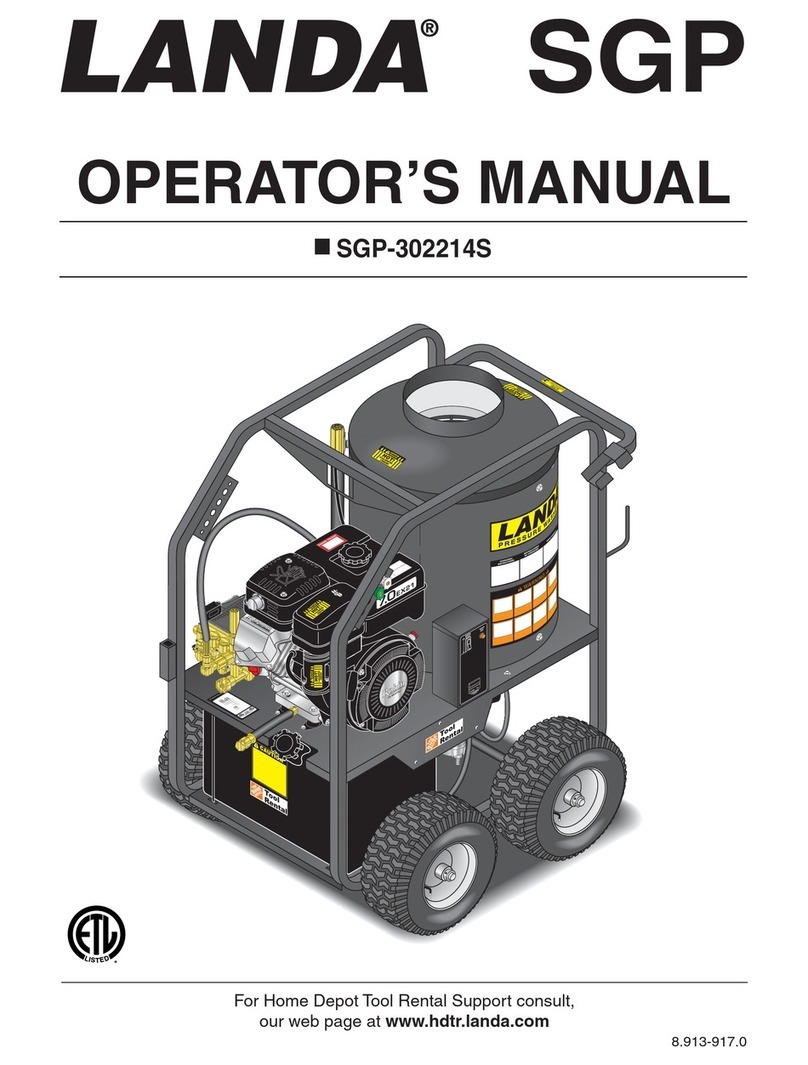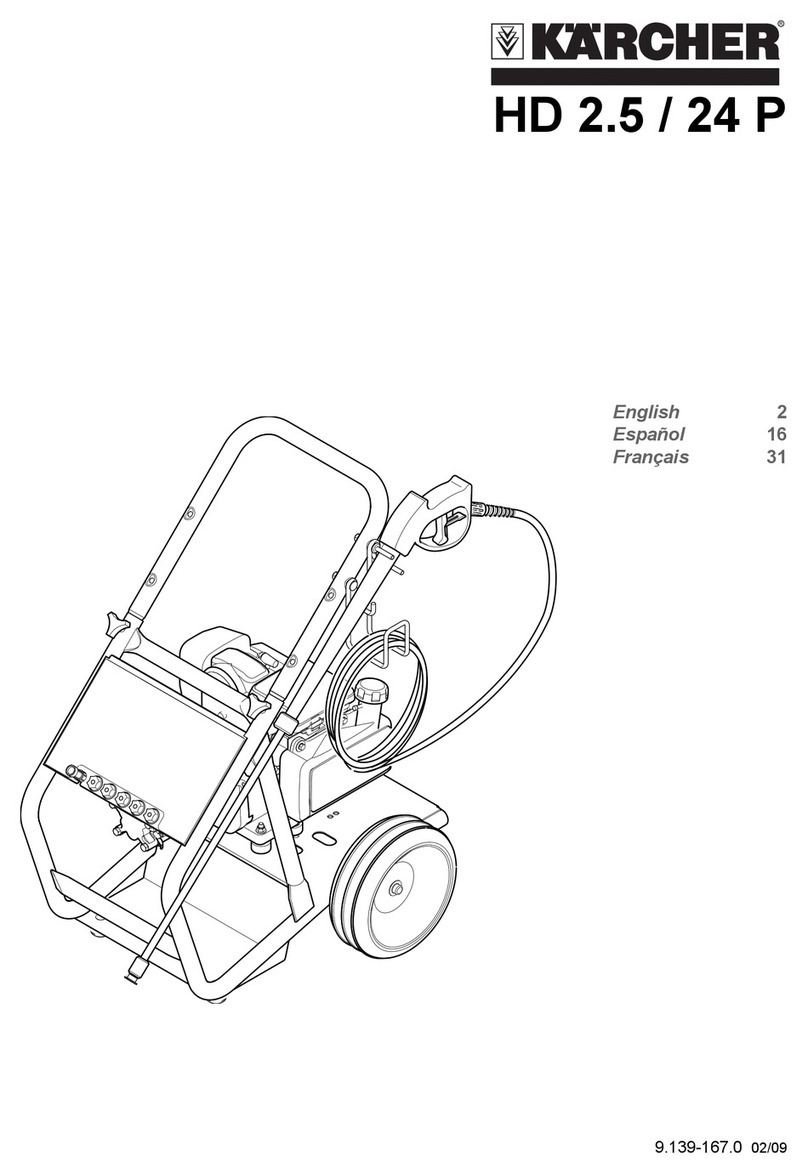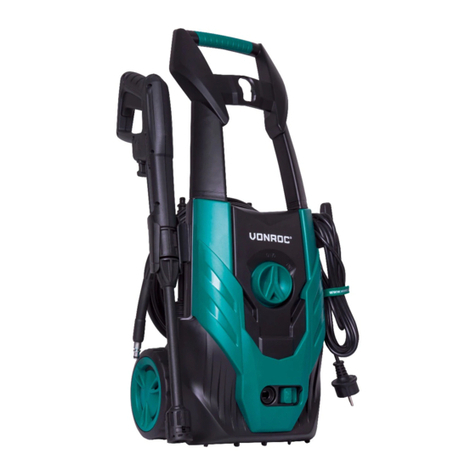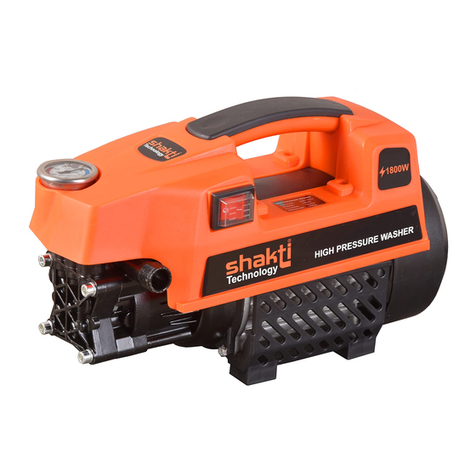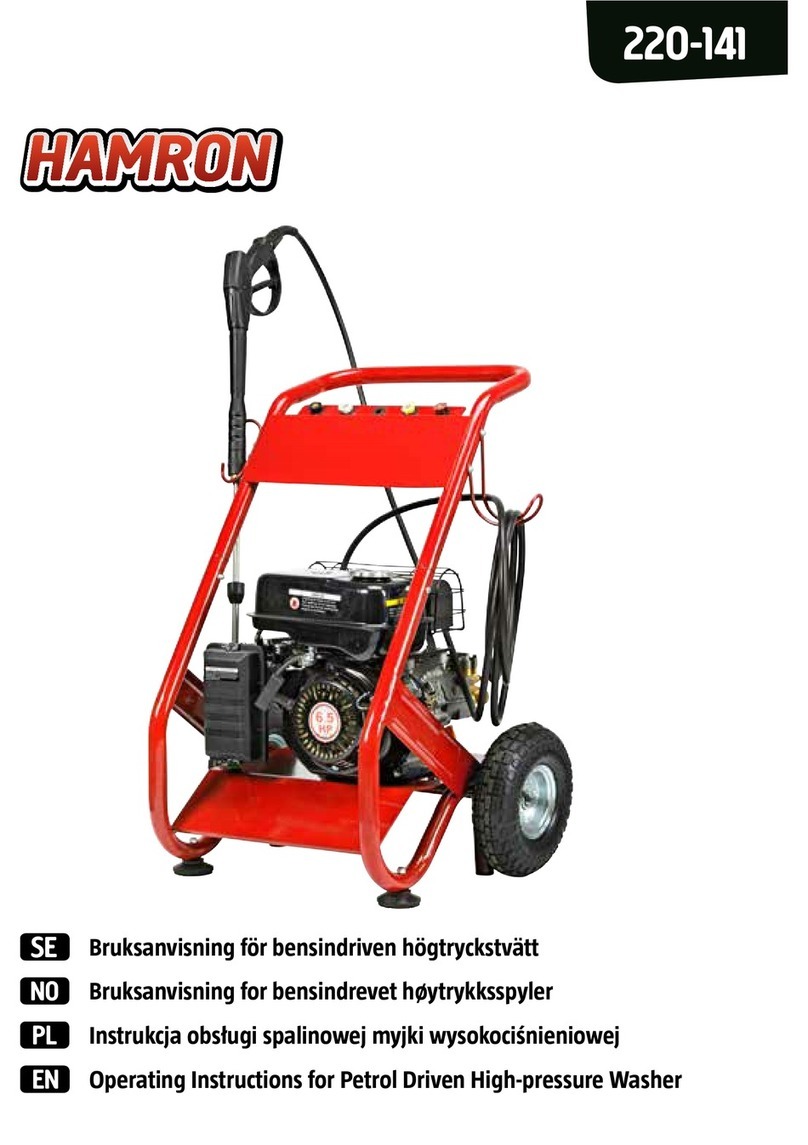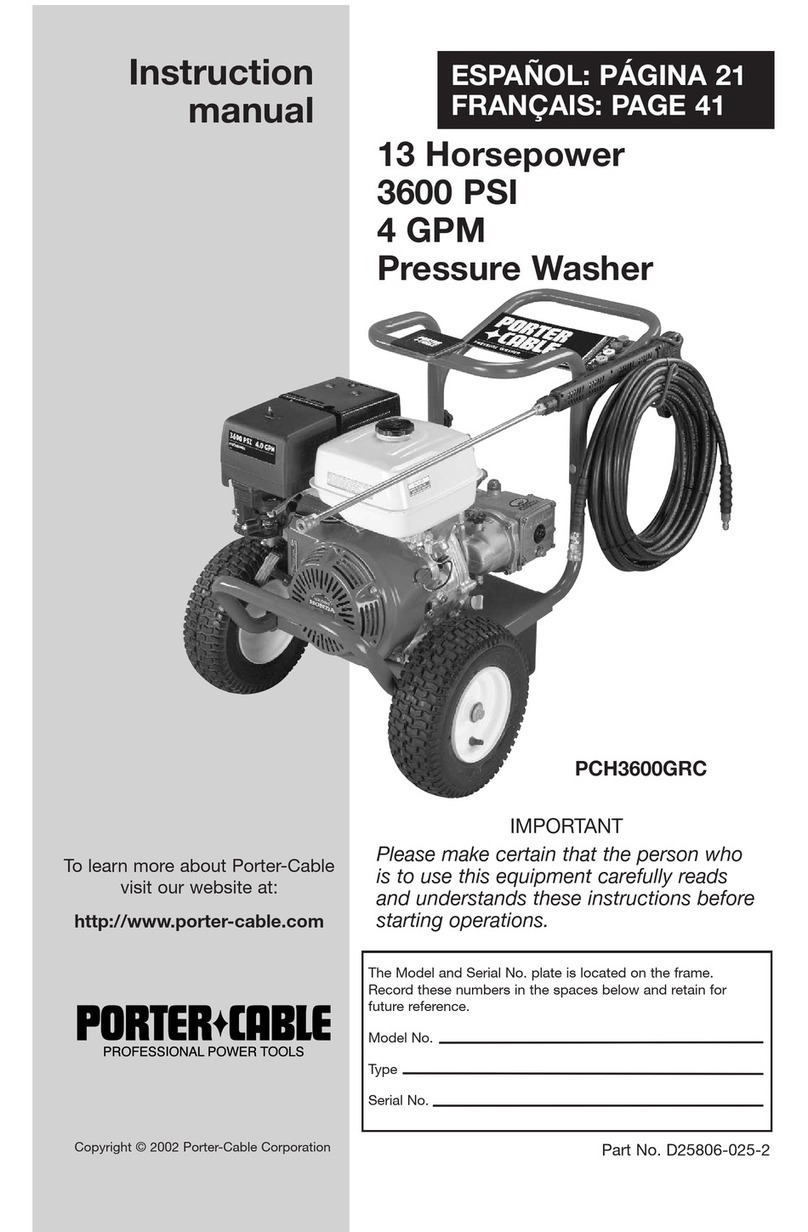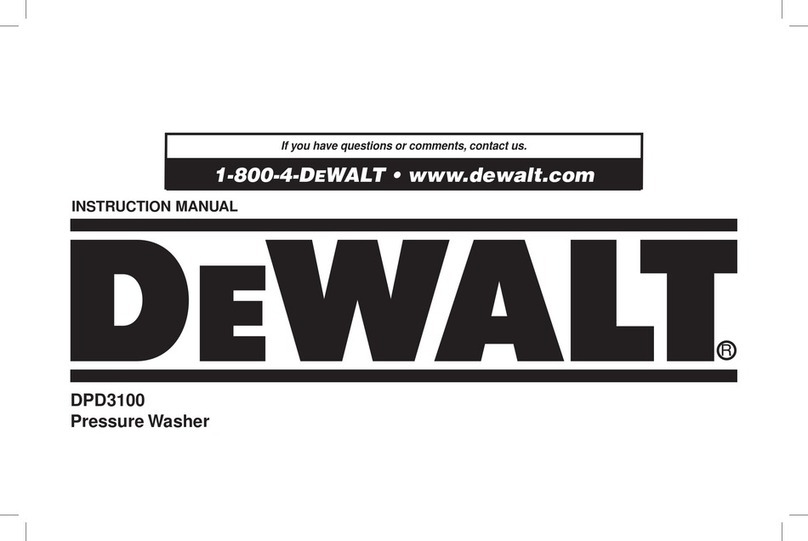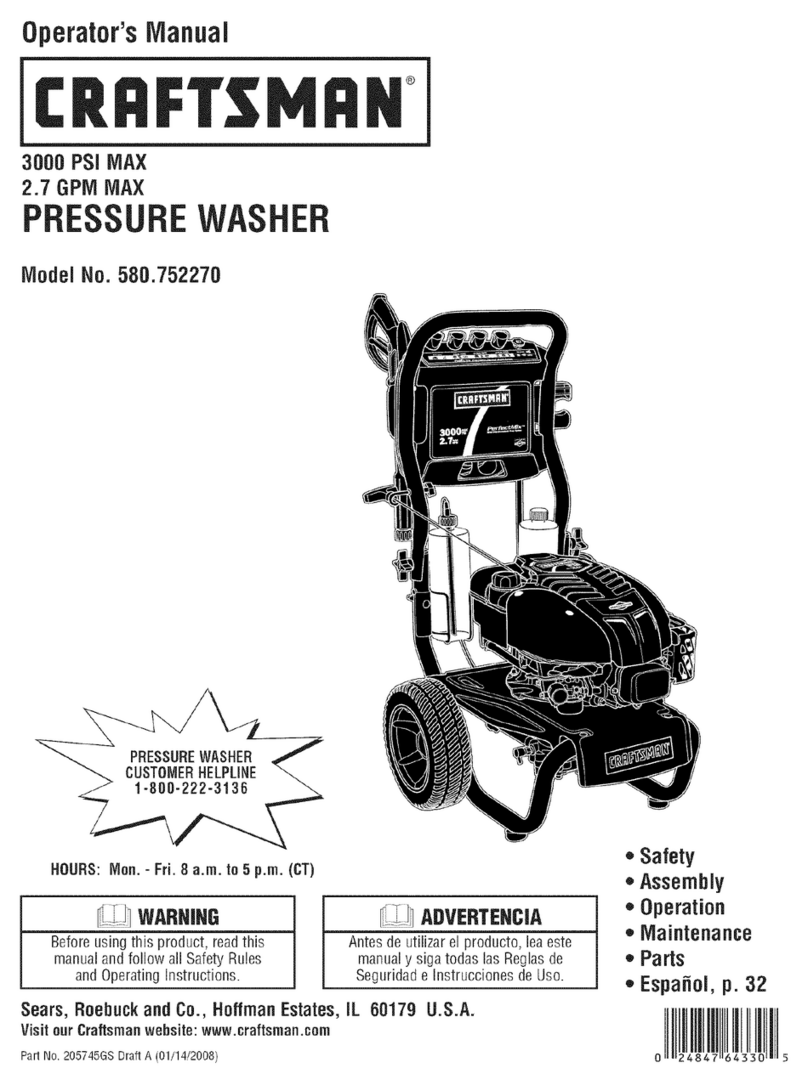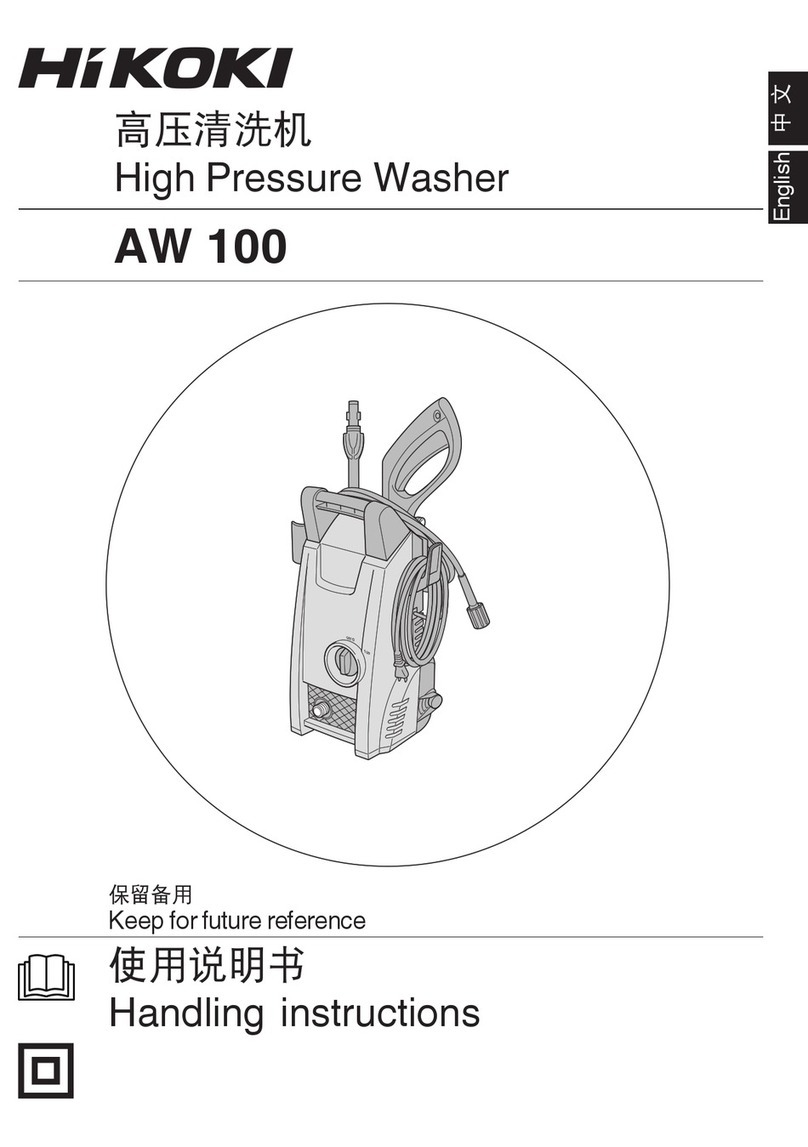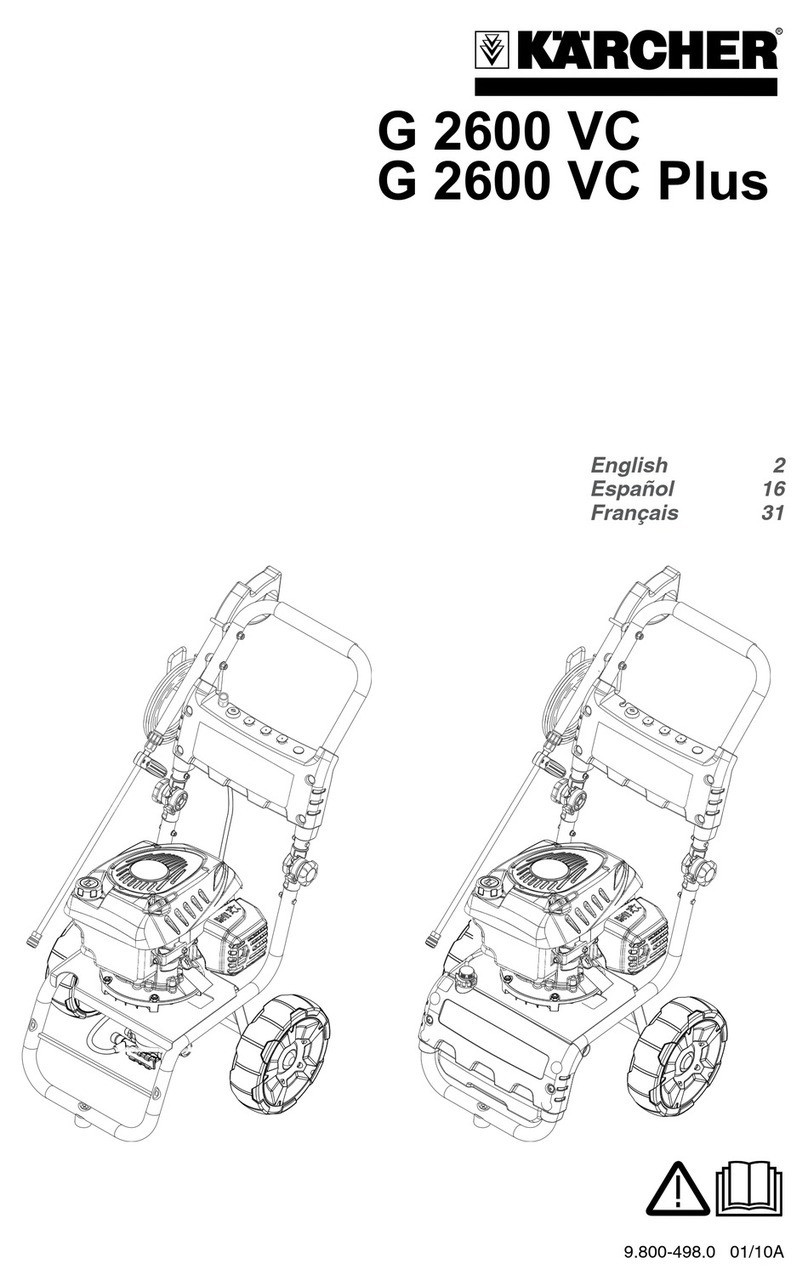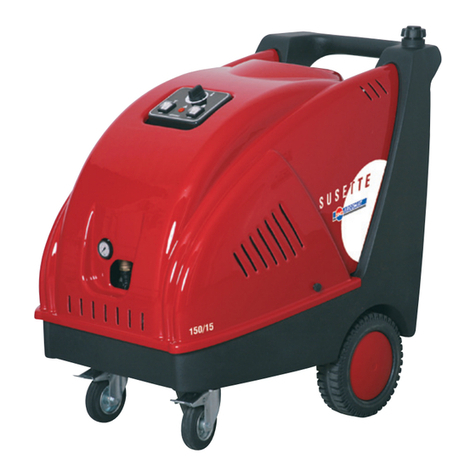
7
Safety
gases or vapors are not present. Do not store or
use gasoline near this machine.
6. Use No. 1 or No. 2 heating oil (ASTM D306) only.
NEVER use gasoline in your fuel oil tank. Gasoline
is more combustible than fuel oil and could result in
a serious explosion. NEVER use crankcase or
waste oil in your burner. Fuel unit malfunction could
result from contamination.
7. Do not confuse gasoline and fuel oil tanks. Keep
proper fuel in proper tank.
WARNING: Risk of injury. Hot
surfaces can cause burns. Use
only designated gripping areas of
spray gun and wand. Do not place
hands or feet on non-insulated
areas of the pressure washer.
AVERTISSEMENT: Risque de
blessures. Les surfaces chaudes
peuvent causer des brûlures.
Utiliser uniquement les zones de
prise désignées du pistolet pulvérisateur et de la
lance. Ne pas placer les mains ou les pieds sur des
endroits non isolés de la laveuse à pression
8. Transport/Repair with fuel tank EMPTY or with fuel
shut-off valve OFF.
CAUTION: Hot discharge fluid. Do
not touch or direct discharge
stream at persons or animals.
ATTENTION: Liquide de décharge
chaud. Ne pas toucher ou
décharger directement le jet vers
des personnes ou des animaux
WARNING: This machine produces hot water and
must have insulated components attached to
protect the operator.
AVERTISSEMENT: Cette machine produit de l'eau
chaude et doit comporter des composants isolés
attachés pour protéger l'opérateur
9. To reduce the risk of injury, close supervision is
necessary when a machine is used near children.
Do not allow children to operate the pressure
washer. This machine must be attended during
operation.
WARNING: Grip cleaning wand
securely with both hands before
starting. Failure to do this could
result in injury from a whipping
wand.
AVERTISSEMENT: Agripper la
lance de nettoyage avec les deux
mains avant de commencer. Le
non-respect de cette consigne
pourrait mener à des blessures
causées par le mouvement violent de la lance
10. Never make adjustments on machine while in
operation.
Be certain all quick coupler fittings are secured
before using pressure washer.
WARNING: High pressure
developed by these machines will
cause personal injury or
equipment damage. Keep clear of
nozzle. Use caution when oper-
ating. Do not direct discharge
stream at people and animals, or
severe injury or death will result.
AVERTISSEMENT: La haute
pression générée par ces machines causera des
lésions corporelles ou des dommages à
l'équipement.
Se tenir à l'écart de la buse. Faire preuve de
prudence lors de l'utilisation. Ne pas décharger
directement le jet vers des personnes ou des
animaux, car cela risquerait de causer des
blessures graves ou même la mort.
WARNING: Protect machine from
freezing.
AVERTISSEMENT: Protéger la
machine contre le gel.
11. To keep machine in best
operating conditions, it is
important you protect machine
from freezing. Failure to protect
machine from freezing could
cause malfunction of the machine and result in
death, serious bodily injury, and/or property
damage. Follow storage instructions specified in
this manual.
12. Inlet water must be clean fresh water and no hotter
then 90°F.
Landa PGDC Operator’s Manual 8.916-596.0 - BF
WARNING
RISK OF INJURY.
HOT SURFACES
CAN CAUSE BURNS
WARNING
HOT DISCHARGE FLUID:
DO NOT TOUCH OR
DIRECT DISCHARGE
STEAM AT PERSONS.
WARNING
TRIGGER GUN KICKS
BACK — HOLD WITH
BOTH HANDS
WARNING
RISK OF INJECTION
OR SEVERE INJURY
TO PERSONS. KEEP
CLEAR OF NOZZLE.
WARNING
PROCTECT FROM
FREEZING
